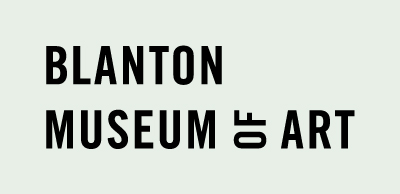An Eagle's Nest
Primary
Edward Avedisian
(Lowell, Massachusetts, 1936–Philmont, New York, 2007)
NationalityAmerican, North America
Date1965
MediumAcrylic on canvas
DimensionsCanvas: 72 1/2 x 72 1/4 in. (184.2 x 183.5 cm)
Credit LineBlanton Museum of Art, The University of Texas at Austin, Gift of Mari and James A. Michener, G1968.30
Keywords
Rights Statement
Collection AreaModern and Contemporary Art
Object numberG1968.30
On View
Not on viewAlthough he began his career as a second generation Abstract Expressionist, Edward Avedisian is best known today for his paintings from the 1960s, which demonstrate affinities with both geometric and color field painting. His work from this period was admired by critic Clement Greenberg, who purchased at least one Avedisian painting for his personal collection. In the mid 1960s, Avedisian was affiliated with the Op art movement. The same year he painted An Eagle’s Nest, curator William Seitz showcased his work in the 1965 exhibition The Responsive Eye.
Between 1963 and 1966, Avedisian worked almost exclusively with the motif of striped or banded circles on square canvases. Instead of applying paint to the canvas with a brush, he stained it directly into the support, a technique he borrowed from Helen Frankenthaler and Morris Louis. Avedisian tended to favor bright, vivid colors as well, although he refrained from juxtaposing complementary (or high-contrast) colors in the same canvas. As a result, his paintings lack the optical vibration or “flip” characteristic of much Op art. They do, however, play with figure/ground relationships, since the circular forms appear alternately to protrude out of or recede back into the canvas.
An Eagle’s Nest is composed of two gray-blue circles with navy-blue bands that float in a field of shocking lime green. Because the color (in this case Liquitex, a form of acrylic paint) was soaked into the canvas, the edges of both the circles and the bands are hazy and imprecise, although the crisp pencil marks visible underneath the paint suggest that the artist initially drew the circles with the aid of a compass. Avedisian placed one of the circles at the upper left corner, and the other at the lower right corner, creating a vague impression of movement. Indeed, it is possible to read the two circles as merely one circle represented at two different moments in time—that is, at two different points in its arc down across the canvas. The circular forms that populate so much of Avedisian’s work garnered a variety of adjectives in the 1960s, such as “amoebic,” “nucleic,” “planetary,” “bouncing,” and “jolly.” In 1965 a critic wrote, “Avedisian has taken pains to place his circular forms with deliberate asymmetry so that the circles have the effect of stars thrown out at random in a sky.” As is the case with An Eagle’s Nest, however, Avedisian’s titles usually have no direct visual analogue in the painting. With his playful object-related titles, such as Baseball and No Snow, Avedisian would even seem to comment on (and perhaps tease) the viewer of modern art who strains, unsuccessfully, to identify a recognizable object in an abstract painting.
Exhibitions





![Two Eagles, plate 2 from Les Aigles [Eagles]](/internal/media/dispatcher/18721/thumbnail)









